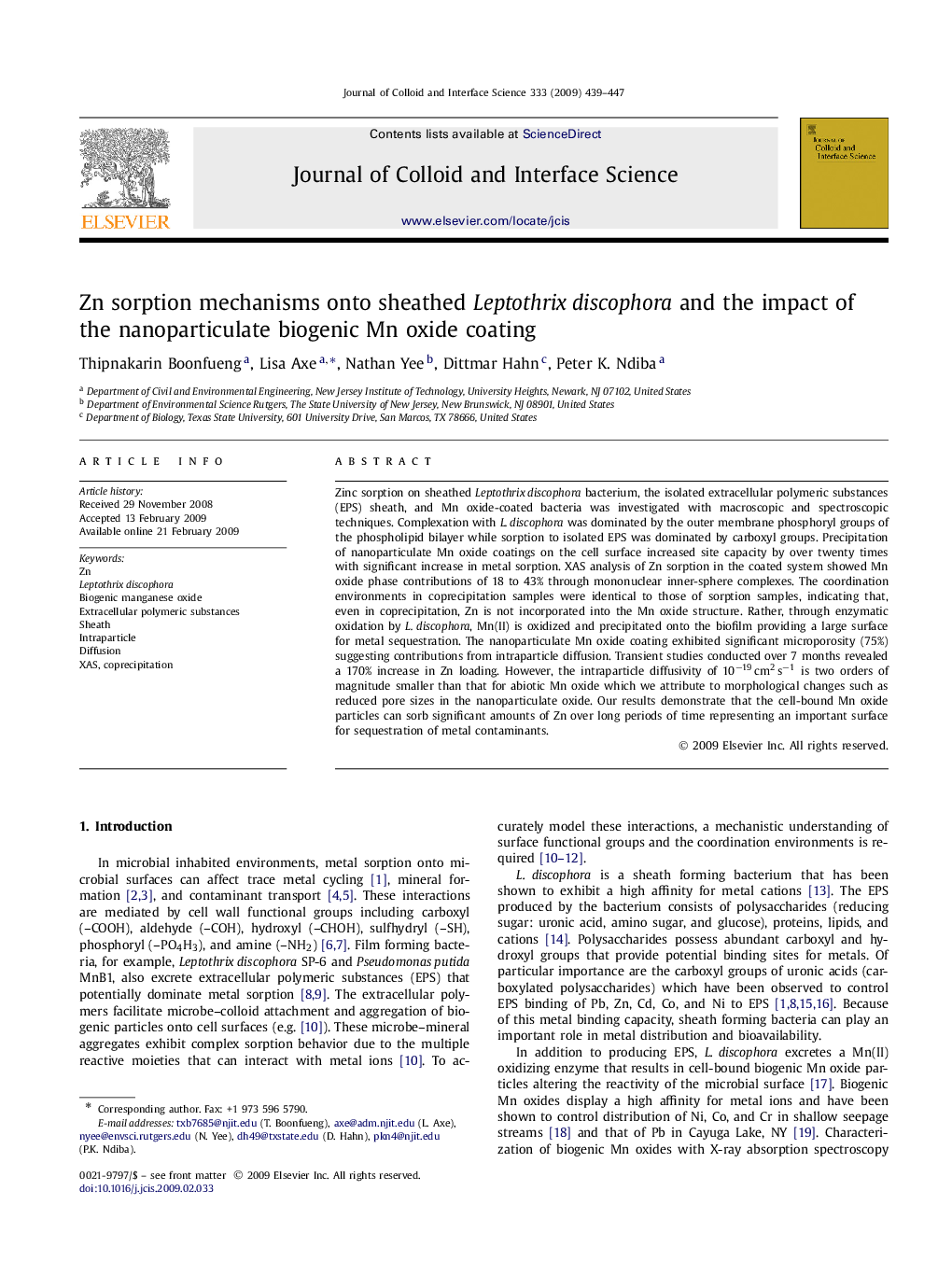| کد مقاله | کد نشریه | سال انتشار | مقاله انگلیسی | نسخه تمام متن |
|---|---|---|---|---|
| 610385 | 880648 | 2009 | 9 صفحه PDF | دانلود رایگان |

Zinc sorption on sheathed Leptothrix discophora bacterium, the isolated extracellular polymeric substances (EPS) sheath, and Mn oxide-coated bacteria was investigated with macroscopic and spectroscopic techniques. Complexation with L. discophora was dominated by the outer membrane phosphoryl groups of the phospholipid bilayer while sorption to isolated EPS was dominated by carboxyl groups. Precipitation of nanoparticulate Mn oxide coatings on the cell surface increased site capacity by over twenty times with significant increase in metal sorption. XAS analysis of Zn sorption in the coated system showed Mn oxide phase contributions of 18 to 43% through mononuclear inner-sphere complexes. The coordination environments in coprecipitation samples were identical to those of sorption samples, indicating that, even in coprecipitation, Zn is not incorporated into the Mn oxide structure. Rather, through enzymatic oxidation by L. discophora, Mn(II) is oxidized and precipitated onto the biofilm providing a large surface for metal sequestration. The nanoparticulate Mn oxide coating exhibited significant microporosity (75%) suggesting contributions from intraparticle diffusion. Transient studies conducted over 7 months revealed a 170% increase in Zn loading. However, the intraparticle diffusivity of 10−19 cm2 s−1 is two orders of magnitude smaller than that for abiotic Mn oxide which we attribute to morphological changes such as reduced pore sizes in the nanoparticulate oxide. Our results demonstrate that the cell-bound Mn oxide particles can sorb significant amounts of Zn over long periods of time representing an important surface for sequestration of metal contaminants.
Zn K-edge χ(k)⋅k3χ(k)⋅k3 spectra of sorption samples as a function of surface (L. discophora , isolated EPS, Mn oxide-coated bacteria, and abiotic Mn oxide (HMO)) with 10−4 molZngsolid−1, pH 6.6, 10−2 ionic strength with NaNO3 and as a function of contact times (4 h, 14 days, and 7 months) along with Fourier transformed χ(k)⋅k3χ(k)⋅k3 spectra. Solid lines represent the data and dashed lines are the fit.Figure optionsDownload as PowerPoint slide
Journal: Journal of Colloid and Interface Science - Volume 333, Issue 2, 15 May 2009, Pages 439–447